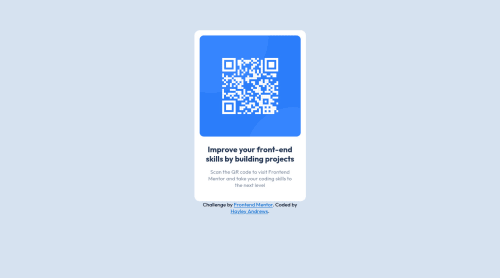QR Code Component Challenge with semantic HTML and CSS

Solution retrospective
Finally was able to breeze through a build! I made the Alt attribute "queue are code" because I wanted the reading assistant to pronounce it correctly. Was that necessary or would "q r code" have been just fine? Is there a tool to check this? Thanks!
Please log in to post a comment
Log in with GitHubCommunity feedback
- @jvmcpheron
For your question about whether or not there's a tool. I'm not what the "right" tool is, but the whole point of alt text for accessibility purposes is that people who can't see the screen would likely need to listen to a screen reader tell them what's on the screen.
So typing any potential alt text into a text-to-speech tool (the same kinda tool a visually-impaired user may themselves use) will let you know pretty quickly whether or not your alt text understandable.
I'm not a pro by any means, and I'm not sure how universal the interpretations of text-to-speech generators are. But I took the liberty of typing "q r code" into a free text-to-speech site, and it sounds exactly right.
This was the site: https://www.naturalreaders.com/online/
Idk how useful this is, but hopefully this helps.
- @Enmanuel-Otero-Montano
Hello Hayley!
I don't know of any tools for this, but a little guide would be that in case the "alt" attribute had content, it should describe exactly what the image represents or as close as possible to what the image describes.
Join our Discord community
Join thousands of Frontend Mentor community members taking the challenges, sharing resources, helping each other, and chatting about all things front-end!
Join our Discord